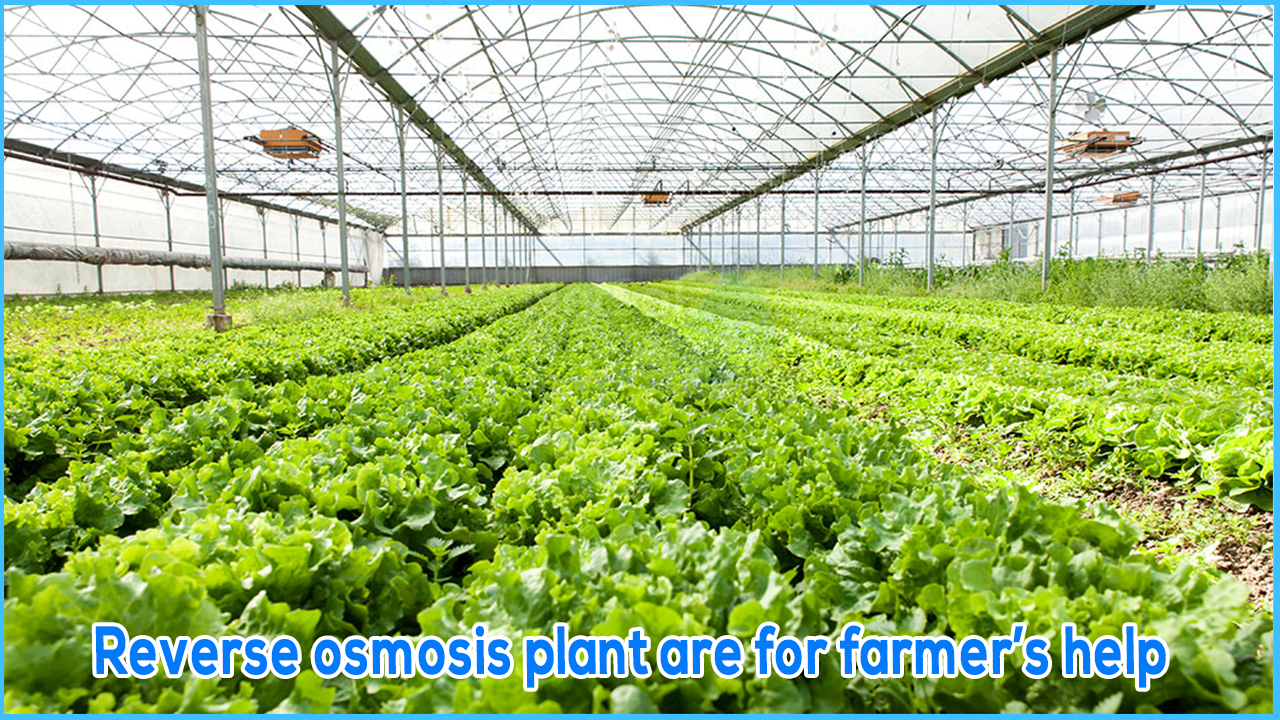WHAT IS REVERSE OSMOSIS?
The process of driving a solvent through a membrane from a region of high solute concentration to a region of low salt concentration by producing a pressure greater than the osmotic pressure is known as reverse osmosis.
Farmers can benefit greatly from reverse osmosis systems. RO filters separate water molecules from other dissolved solids in the water (like carbonates). Because carbonates act as a buffer, they can make pH control difficult.
WHEN TO USE REVERSE OSMOSIS SYSTEM?
Reverse osmosis filters are the most dependable way to improve the quality of source water. Carbonates are the main culprits of poor source water quality for hydroponics or aquaponics. Carbonates are used as a buffer. This means that they dissolve in and precipitate out of solutions with pH values ranging from 7.5 to 10. Carbonates, on the other hand, are basic, when they dissolve or precipitate, they raise the pH of the solution. Growers will have a more difficult time lowering pH as a result of this.
Having a high ppm of salts (mostly carbonates) in your starting water also interferes with the nutrients you can add to the solution.At 200 or 250 ppm, the quality of the source water becomes an issue. This means that if your source water has a ppm value greater than 200, you should consider a reverse osmosis system. It's definitely worth getting one if the ppm value is greater than 250.
OPERATING TASKS FOR REVERSE OSMOSIS SYSTEMS
- BLACKFLUSHING FILTERS: The majority of the filters in this system have a backflushing function. Backflushing removes "gunk" from the filter, increasing flow and filter lifetime.
- REPLACING THE RO MEMBRANE: Membranes can wear out and lose efficiency. Check with the filter manufacturer to see what intervals they recommend for replacement.
- SCHEDULED CHECKS AND RECORDS: Keep a maintenance sheet to track the pump's efficiency. For example, in one maintenance entry, the incoming source water could be 433 ppm and the filtered water could be 5.8 ppm.
IRRIGATION MEMBRANES AND ULTRAFILTRATION
Even though plants and vegetables already have natural filtration means, they can meet much less stringent agricultural water filtration requirements for irrigation. As a result, irrigation has a larger pool of resources to draw from than scarce groundwater resources. Irrigation is primarily based on practices that rely on the reuse of grey water, as well as treated sewage effluent (TSE). These practices generate wastewater, which is regarded as a poor source of drinking water but is ideal for irrigation and farming after passing through a reverse osmosis system. Many farms have resorted to only using these effective water-saving techniques, and have completely eliminated the need for irrigation.
Mostly all naturally occurring water contains contaminants derived from the surrounding rocks and soil that comprise the earth's crust. Drained irrigation water and effluent sewage water both contribute to water quality. Because of the debilitating effect salt has on soil and product growth, salinity is typically the main concern in the irrigation industry. However, other contaminants, such as boron, can be just as harmful to the irrigation industry due to their similar negative effects. Boron levels that are too high cause toxicity, which harms the soil and reduces overall product yield. These high levels can exist naturally in groundwater and seawater, but they can also be caused by contaminated water.
CONCLUSION
The importance of water for agricultural use cannot be overstated, as this resource is the driving force behind food growth. Water is required not only to grow crops, but also to raise livestock for our meat products. There is a direct relationship between the amount of water used in the agricultural sector and the number of crops produced. Agriculture continues to consume the most of our water resources, and the reality of diminishing water sources is a problem that the world, for the most part, ignores. As a result, Our NETSOL WATER SOLUTION focuses on developing high-quality water treatment systems that generate large amounts of freshwater.




